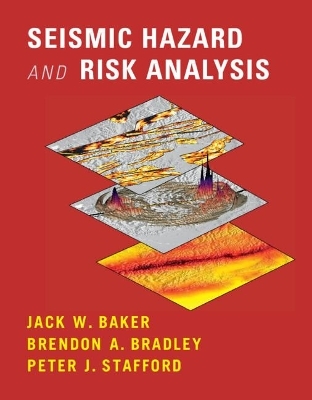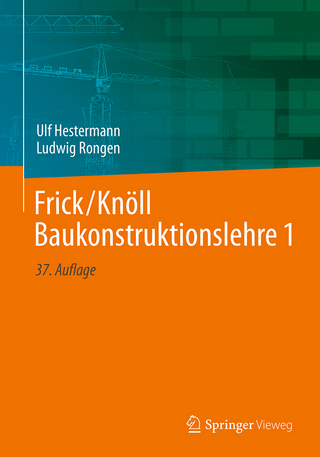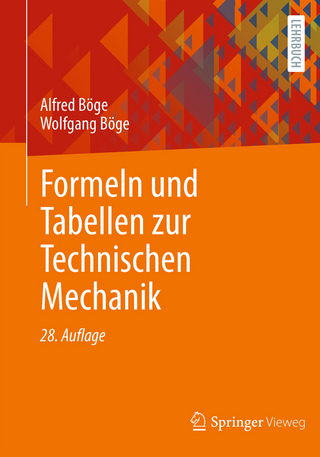
Seismic Hazard and Risk Analysis
Cambridge University Press (Verlag)
978-1-108-42505-6 (ISBN)
Seismic hazard and risk analyses underpin the loadings prescribed by engineering design codes, the decisions by asset owners to retrofit structures, the pricing of insurance policies, and many other activities. This is a comprehensive overview of the principles and procedures behind seismic hazard and risk analysis. It enables readers to understand best practises and future research directions. Early chapters cover the essential elements and concepts of seismic hazard and risk analysis, while later chapters shift focus to more advanced topics. Each chapter includes worked examples and problem sets for which full solutions are provided online. Appendices provide relevant background in probability and statistics. Computer codes are also available online to help replicate specific calculations and demonstrate the implementation of various methods. This is a valuable reference for upper level students and practitioners in civil engineering, and earth scientists interested in engineering seismology.
Jack Wesley Baker is a Professor in the Department of Civil and Environmental Engineering at Stanford University. His research focuses on the use of probabilistic and statistical tools for modeling of extreme loads on structures. He is the recipient of several awards, including: the Shah Family Innovation Prize from the Earthquake Engineering Research Institute, the CAREER Award from the National Science Foundation, the Early Achievement Research Award from the International Association for Structural Safety and Reliability, the Walter L. Huber Prize from ASCE, the Helmut Krawinkler Award from the Structural Engineers Association of Northern California, and the Eugene L. Grant Award for excellence in teaching. Brendon Archie Bradley is a Professor in the Department of Civil and Natural Resources Engineering at the University of Canterbury, New Zealand. His areas of interest include engineering seismology, strong ground motion prediction, seismic response analysis of structural and geotechnical systems, and seismic performance and loss estimation methods. He has received several notable awards for work with collaborators, including the 2012 Ivan Skinner EQC award, the 2013 Royal Society of New Zealand Rutherford Discovery Fellowship, the 2014 Shamsher Prakash Foundation Research Award, the 2014 New Zealand Engineering Excellence Award for Young Engineer of the Year, the 2015 University of Canterbury Teaching Award, the 2015 TC203 Young Researcher Award, the 2015 EERI Shah Innovation Prize, the 2016 ASCE Norman Medal, the 2016 New Zealand Prime Minister's Emerging Scientist Prize, and the 2019 New Zealand Geotechnical Society Geomechanics Award. Peter James Stafford is a Reader in Engineering Seismology and Earthquake Engineering at the Department of Civil and Environmental Engineering, Imperial College, London. Although his research interests are primarily in the areas of Engineering Seismology and Earthquake Engineering, he also has professional consulting experience as both a structural and geotechnical engineer. A lot of Dr Stafford's research is influenced by problems encountered in real-world probabilistic seismic hazard and risk analyses for critical infrastructure related to nuclear and hydro-electric power generation and gas extraction. He also has significant experience with the reinsurance sector and providing inputs to the development of portfolio loss models.
1. Introduction; Part I: Hazard Inputs; 2. Seismic Source Characterization; 3. Characterization of Earthquake Rates and Rupture Scenarios; 4. Empirical Ground-Motion Characterization; 5. Physics-Based Ground-Motion Characterization; Part II: Hazard Calculation; 6. PSHA Calculation; 7. PSHA Products; 8. Non-Ergodic Hazard Analysis; Part III: Risk; 9. Seismic Risk; 10. Ground-Motion Selection; 11. Spatially Distributed Systems; 12. Validations; Appendix A Basics of Probability; Appendix B Basics of Statistics for Model Calibration; References; List of Symbols; Notation Conventions; Index.
| Erscheinungsdatum | 22.10.2021 |
|---|---|
| Zusatzinfo | Worked examples or Exercises |
| Verlagsort | Cambridge |
| Sprache | englisch |
| Maße | 207 x 260 mm |
| Gewicht | 1580 g |
| Themenwelt | Technik ► Bauwesen |
| Technik ► Elektrotechnik / Energietechnik | |
| ISBN-10 | 1-108-42505-4 / 1108425054 |
| ISBN-13 | 978-1-108-42505-6 / 9781108425056 |
| Zustand | Neuware |
| Informationen gemäß Produktsicherheitsverordnung (GPSR) | |
| Haben Sie eine Frage zum Produkt? |
aus dem Bereich


